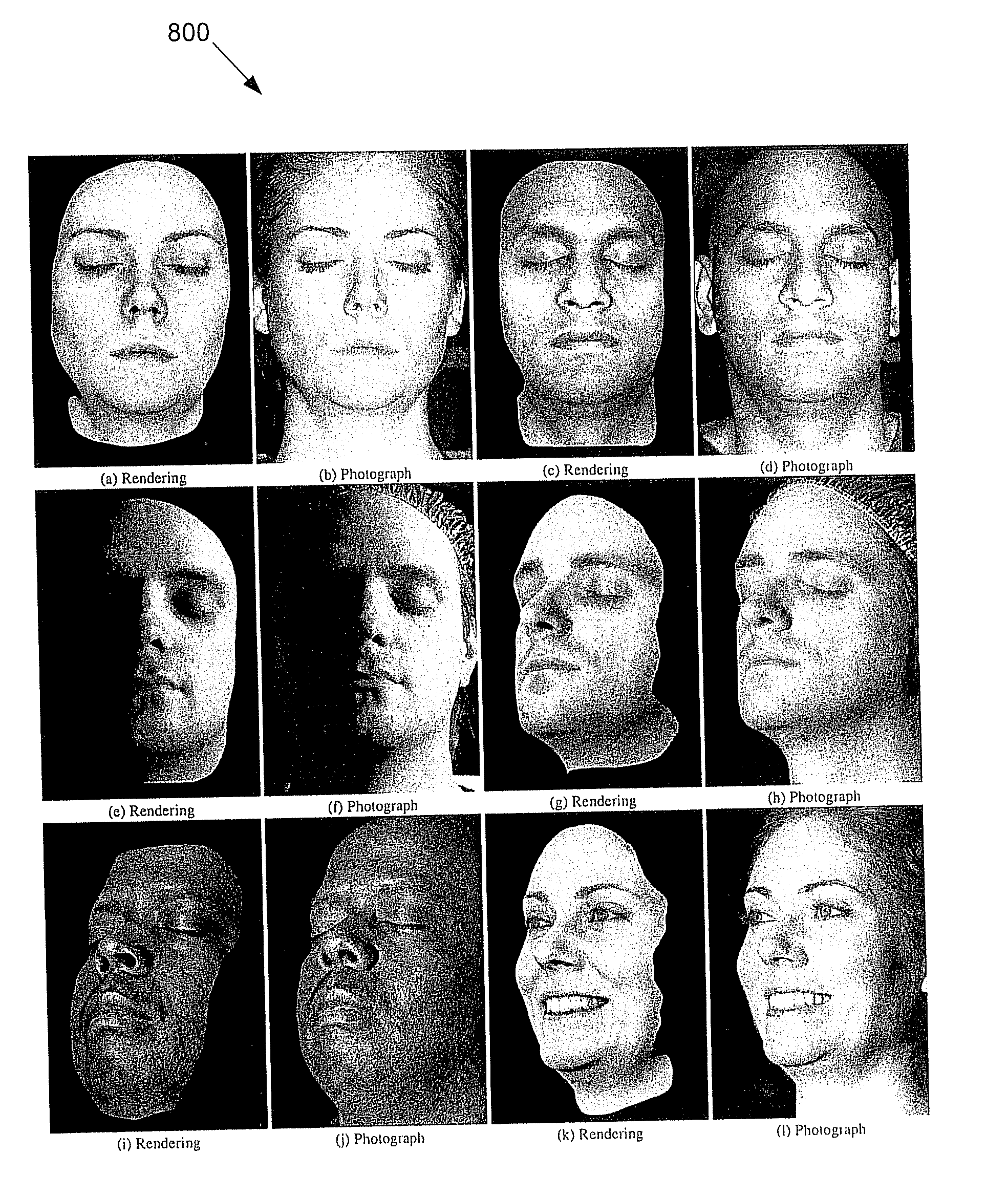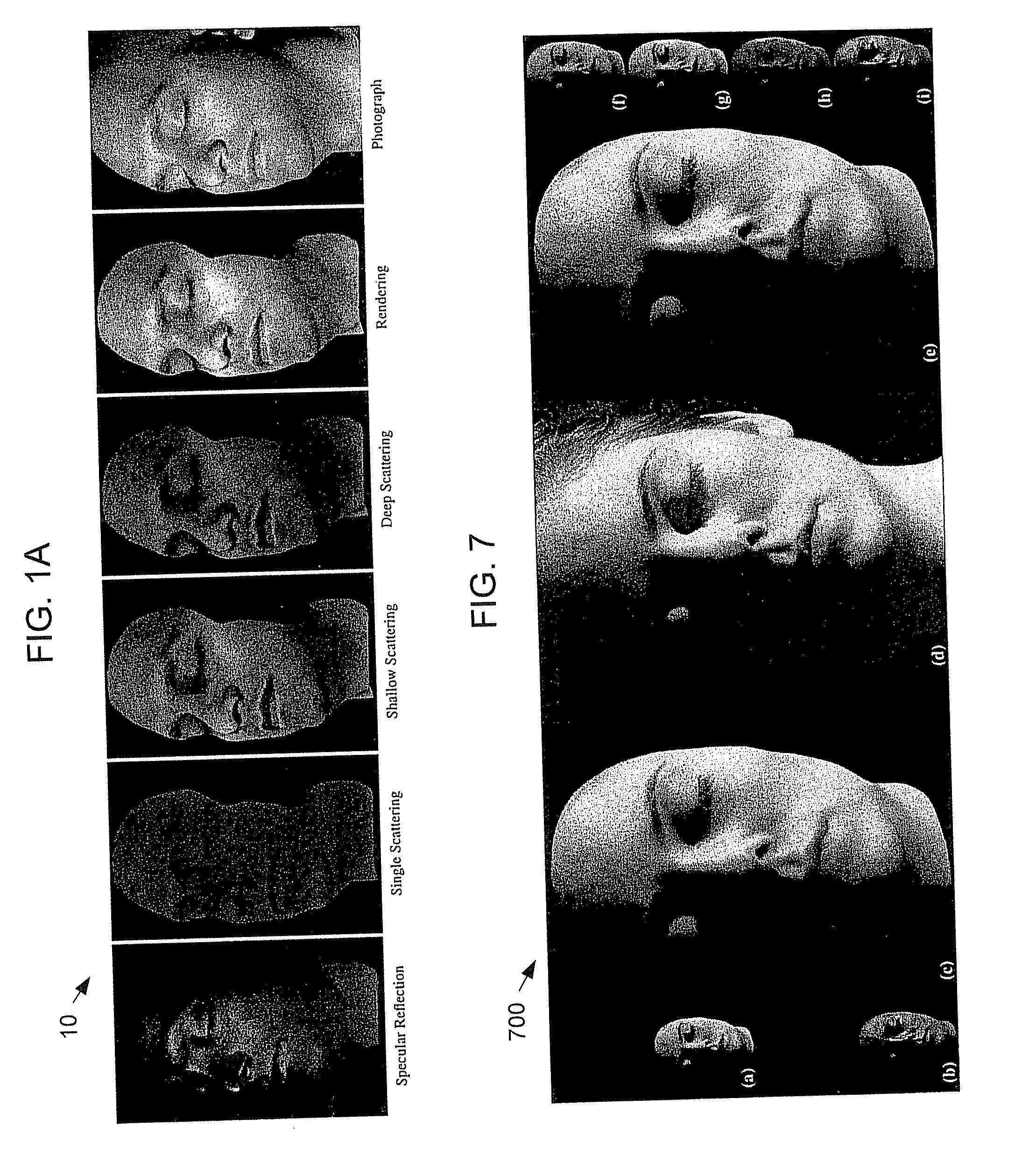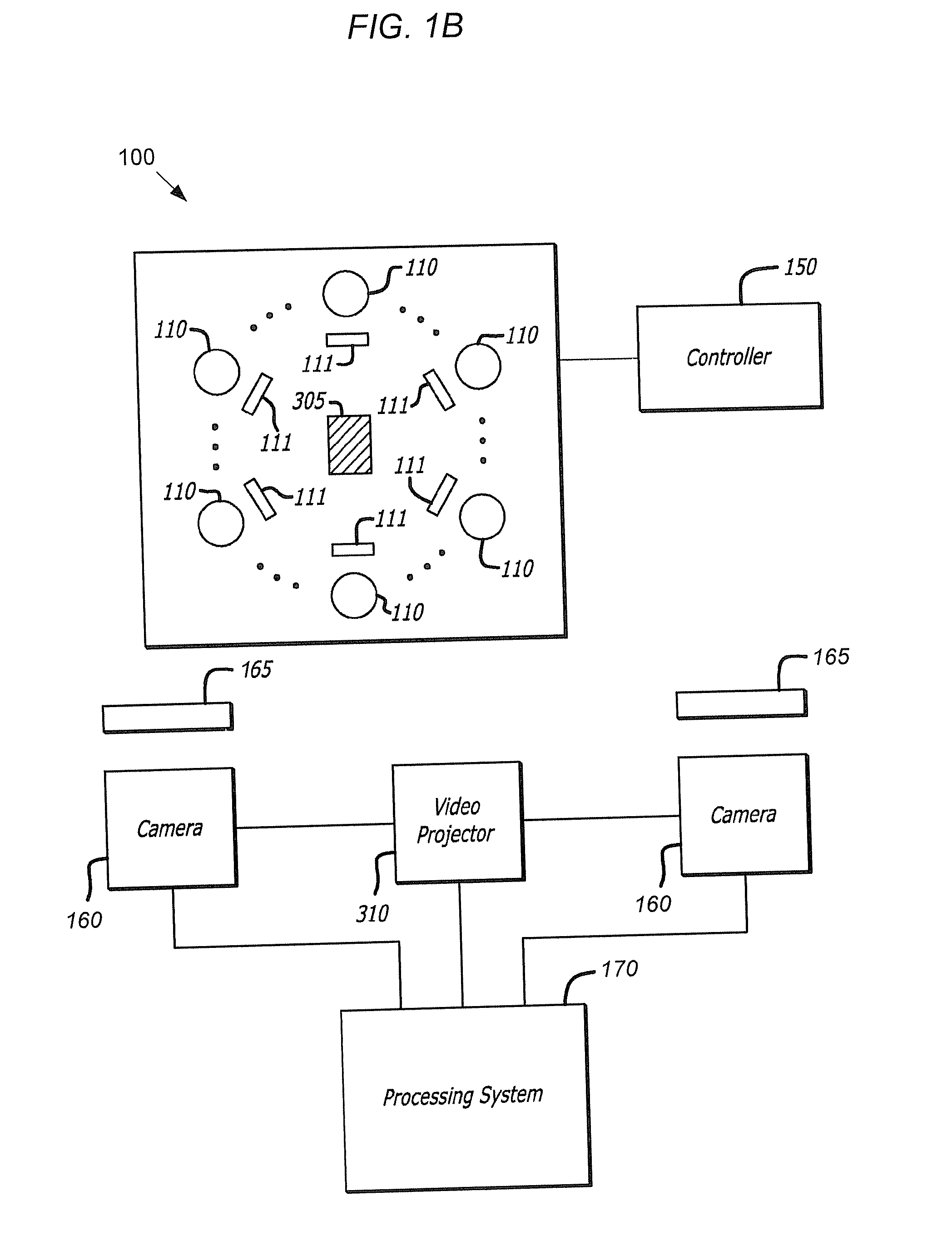Practical Modeling and Acquisition of Layered Facial Reflectance
a technology of facial reflectance and modeling, applied in the field of practical modeling and acquisition of layered facial reflectance, can solve the problems of difficult illumination, unrealistic reproduction, and inability to practically acquire the necessary parameters for these models to accurately reproduce the facial appearance of live subjects, etc., to achieve fast acquisition, facilitate working with live subjects, and facilitate incorporation
- Summary
- Abstract
- Description
- Claims
- Application Information
AI Technical Summary
Benefits of technology
Problems solved by technology
Method used
Image
Examples
Embodiment Construction
[0024]The present disclosure, in general terms, provides techniques for modeling facial skin reflectance as a combination of different layers: specular reflectance, single scattering, and shallow and deep multiple scattering. Modeling can be performed for layered facial reflectance components consisting of specular reflectance, single scattering, and shallow and deep subsurface scattering. Parameters of appropriate reflectance models can be estimated for each of these layers, e.g., from just 20 photographs recorded in a few seconds from a single viewpoint. Spatially-varying specular reflectance and single-scattering parameters can be extracted from polarization-difference images under spherical and point source illumination. For these techniques, direct-indirect separation can be employed to decompose the remaining multiple scattering observed under cross-polarization into shallow and deep scattering components to model the light transport through multiple layers of skin. Finally, a...
PUM
 Login to View More
Login to View More Abstract
Description
Claims
Application Information
 Login to View More
Login to View More - R&D
- Intellectual Property
- Life Sciences
- Materials
- Tech Scout
- Unparalleled Data Quality
- Higher Quality Content
- 60% Fewer Hallucinations
Browse by: Latest US Patents, China's latest patents, Technical Efficacy Thesaurus, Application Domain, Technology Topic, Popular Technical Reports.
© 2025 PatSnap. All rights reserved.Legal|Privacy policy|Modern Slavery Act Transparency Statement|Sitemap|About US| Contact US: help@patsnap.com



